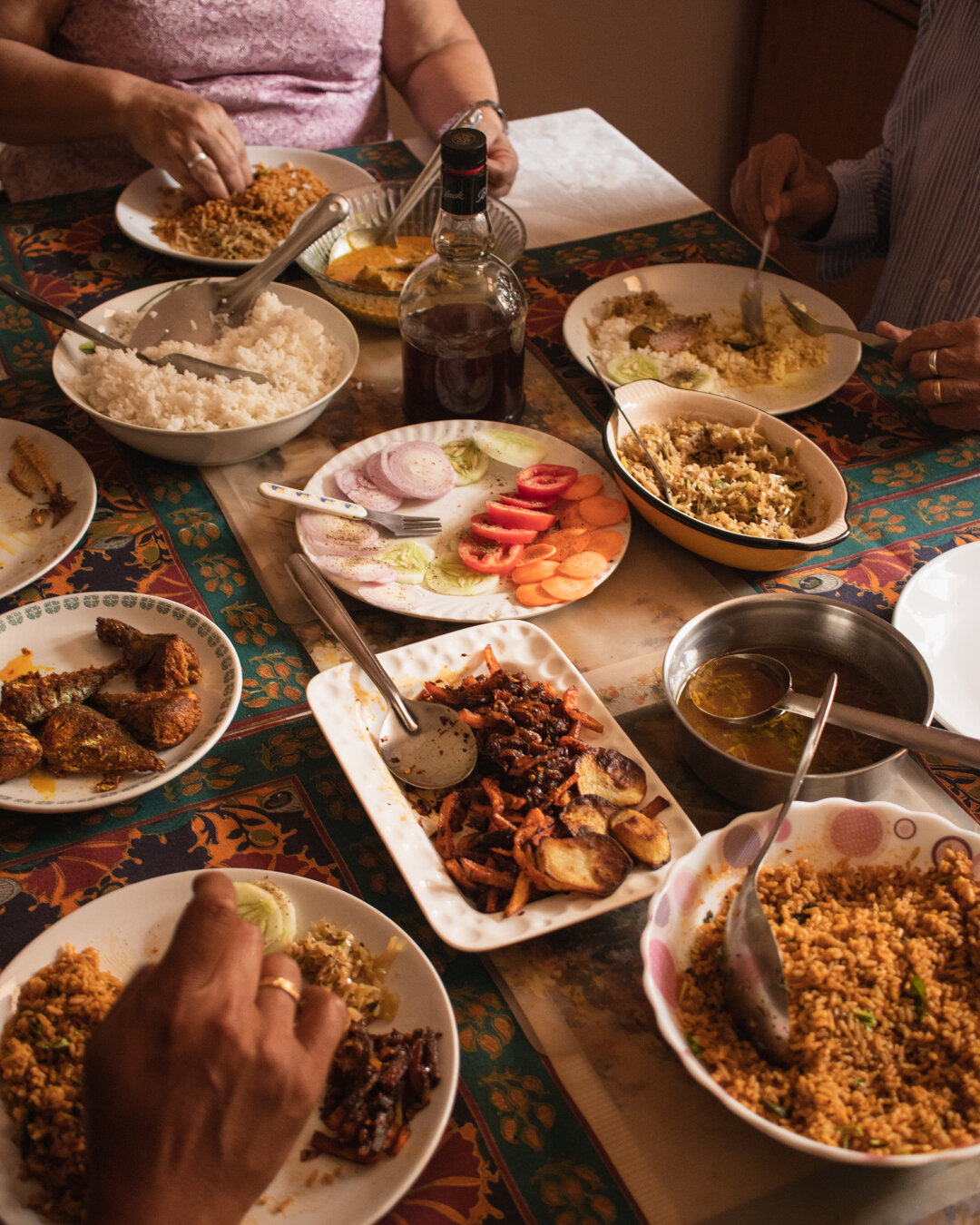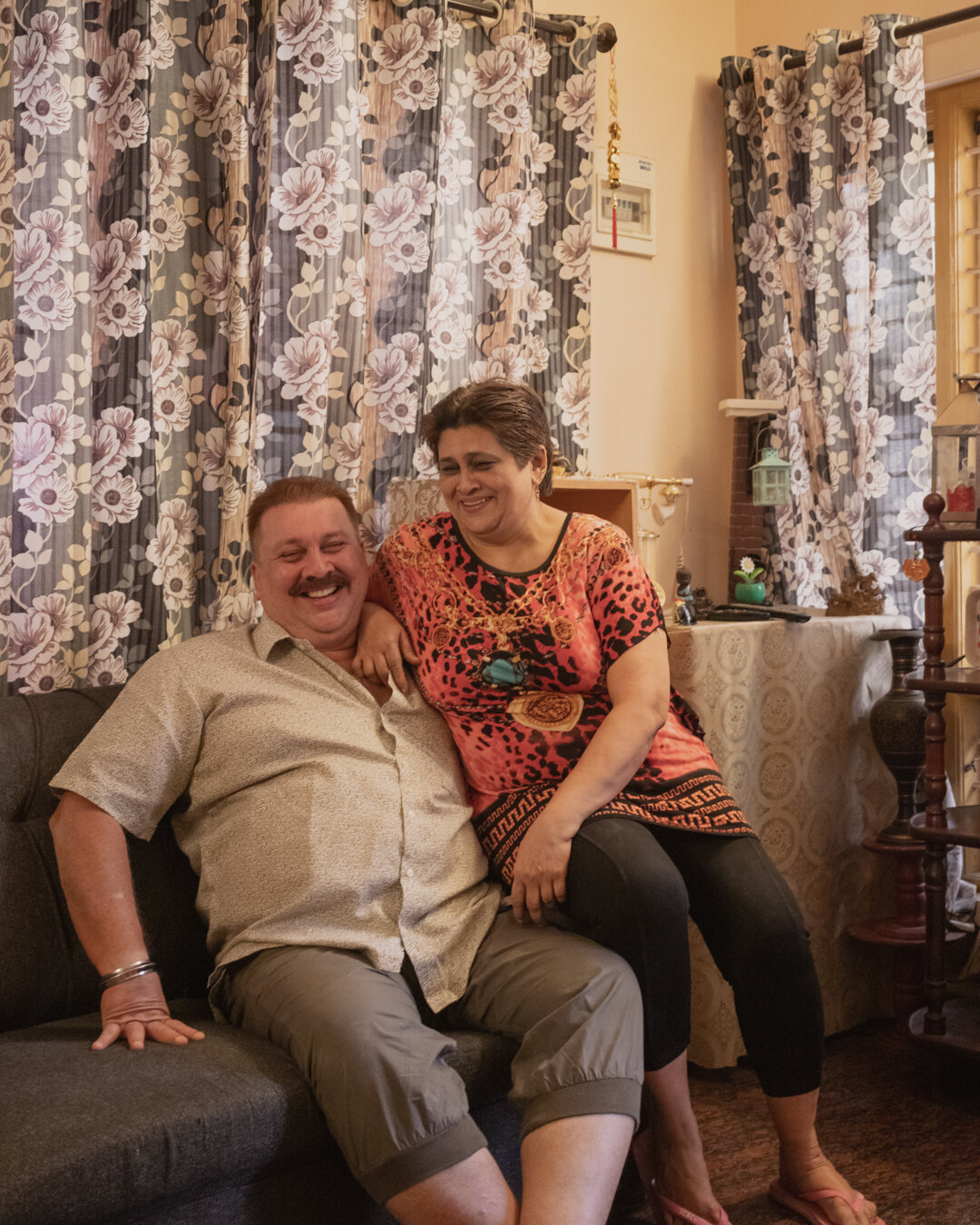Around The Anglo-Indian Table: An Easter Story

Anglo-Indians are a unique and distinctive part of India's cultural fabric. They tell the story of our history, of our ability to adapt and integrate, while also retaining the peculiarities and traits that make us uniquely us. Photographer Atul Pinheiro visits 3 Anglo-Indian families in time for the Easter celebration, to show us the dishes that speak most eloquently about their heritage and traditions.
‘Anglo-Indian,’ as the name suggests, refers to a people of mixed Indian and English lineage. The community, roughly two million at the time of Independence in 1947, has now dwindled to a meagre 300,000 – 1,000,000 as per data from 2010, a full decade ago. The small but vibrant community has a distinct cuisine that draws from their mixed heritage, creating new dishes that have contributed significantly to the rich tapestry of Indian cuisines. Calcutta ‘Chops’, Railway Chicken curry, and Yellow Rice are some of the most well known dishes from the community. Beyond these, is a cuisine that places premium on cooking and eating as a communal activity; putting together meals with bold flavours and generosity.
As our Easter story, photographer Atul Pinheiro, an Anglo-Indian himself, visits the homes of three other Anglo-Indian families, following conversations on what it means to be Anglo-Indian today and the foods that define their heritage, leaving their homes with a full tummy, and a recipe or two.
Beef Devil Fry
“Anglo-Indians have always been witty with their names,” laughs Eric, 63, referring to The Other Thing, a popular homemade wine that’s steeped with ginger and a permanent fixture in most Anglo-Indian homes. The name comes from a most pressing question asked in every Anglo household – “Do you have the other thing with you?”
Eric Pereira and his wife Ruth, 62, live in Banaswadi, and food, especially Anglo-Indian cuisine, runs in their veins. Eric recalls the early days of their marriage when they lived in Shivasamudra, a settlement in Chamarajanagar district, Karnataka, with had a strong Anglo Indian population, and Ruth would make delicious foods with the resources they had on hand. Spotted deer, rabbit, wild boar and porcupine were often hunted; wild boar made for an excellent vindaloo, pickle, and even an Anglo Indian specialty called Ding-Ding.
Another one of Ruth’s specialities is Beef Devil Fry, a wonderful invention that puts leftovers to excellent use. Ruth learned the dish from her mother, who in turn learned it from her husband. Perfect around the holidays, when roasts make a frequent appearance, the recipe repurposes leftover roast meat, with a few pantry staples, and produces a dish that is as decadent and delicious as the original roast itself. The key to a good roast, confides Ruth, is a long marination: she marinates her beef and pork for up to a week, taking them out every day, forking the meat gently, encouraging it to absorb more of the delicious marinade.
Get the recipe here.
Coconut Rice, Ball Curry and Devil's Chutney
For Monty Graham, 58 and his wife Judy, 56, living the heart of Cooke Town's leafy lanes, coconut rice, ball curry and devil's chutney is Sunday lunch. Monty and Judy run a catering business out of their home, but given the volume of orders that come in when coconut rice and ball curry is on the menu, they can only afford to make it twice a month. "We're sold out many, many times over," Monty laughs. "Today, we have an order for coconut rice and ball curry for 25 priests.
At the heart of the Anglo-Indian meal, Judy believes, are the long hours spent in the kitchen, cooking a nourishing, generous meal. Their catering business began in 2018 with a base of 50 customers, and their identity as Anglo-Indians at the core of the food they sell. Today, it is a thriving business with more than 800 regular customers who have largely found them through word of mouth.
The catering service has brought them a community of clients who are enthusiastic about the cuisine, and miss the taste of authentic Anglo-Indian cooking, from a time when Anglo Indians flourished in the neighbourhood. The dishes on their menu are straightforward and home-style, and the couple take pride in cooking the food they know well – there is no looking up recipes from cookbooks here. Today, Monty and Judi are making coconut rice and ball curry with devil’s chutney. Ball curry is a painstaking dish that captures the essence of Anglo-Indian cooking. Judy likens it to making kalkals at Christmas: "The whole family sits together, we gossip and chat to pass the time, as we prepare the meatballs."
And devil’s chutney is the crux of the meal, and a litmus test for how authentic the meal is — while many resort to creative ways to get the fiery red, an authentic devil’s chutney is made from plain red chilli powder.
Get the recipe here.
Puli Fry
Puli Fry is a favourite, not just with Ryan Frantz, but the Anglo-Indian community at large. It is a hearty, unfussy dish that forms the heart of any meal. It is a dish that tastes better the day after, allowing the complex flavours to come together, so it is often typically cooked the night before, and eaten for breakfast. Like most Anglo-Indian recipes that straddle cuisines, pulu fry pairs as effortlessly with bread or roti, as it does with idlis and dosas.
Ryan, 40, is one of three siblings, in what he calls a typical railway colony family, growing up across postings in India. This family recipe, handed down each generation, varies slightly depending on who is making it. Some aunts add a pinch of sugar, others don't; some like a sprinkle of garam masala, others wouldn't dream of it. "But at its core, the recipe is the same – meat and tamarind," he explains.
An ex-adman, Ryan pulls out this recipe when he's entertaining. "Puli fry can be done the day before, so that means no stress on the day of your party." While it is typically cooked with beef, Ryan has no qualms admitting that he's breaks tradition now and again. "I've made it with chicken, fish, even prawn. I make the base stock, and since the meat goes in at the end, I sub with whatever I like — tofu or egg, if my guests are vegetarian."
Get the recipe here.
Photographs by Atul Pinheiro. You can follow his work here.
ALSO ON THE GOYA JOURNAL

























